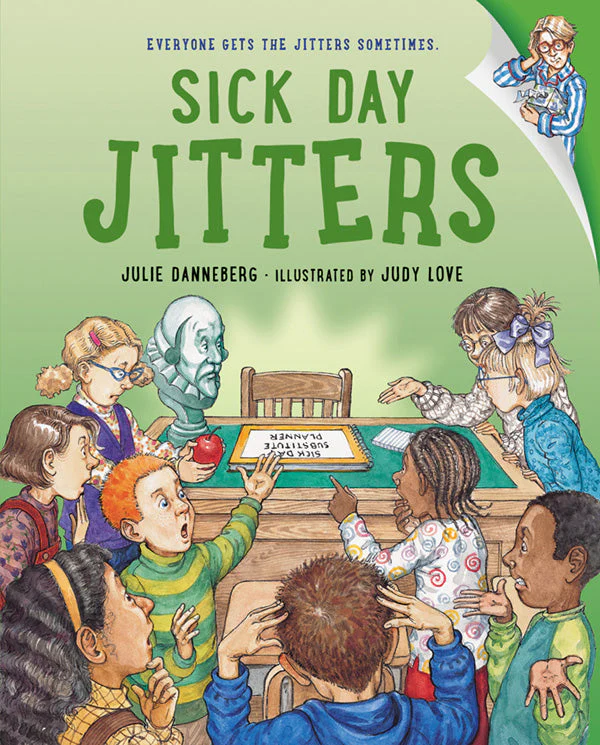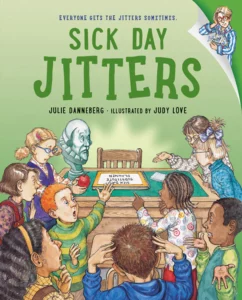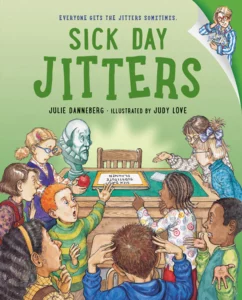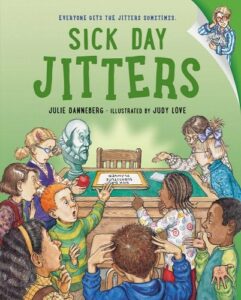Writing comes from reading and reading is the finest teacher of how to write. –Annie Proulx

Like most writers, I learn a lot about writing by reading and studying the writing of other authors. I take apart favorite picture books to study character development, plot structure, how dialogue moves the story along, and more. I do this because seeing how another writer’s story is built helps me get better at constructing my own.
Teaching your student writers why and how to deconstruct a piece of writing is time well spent in your writer’s workshop. When doing it, it is best to focus on just one aspect of the writing. And it helps if you do it with a book or a piece of writing that they are already familiar with. I found that it takes students a bit of time to differentiate between responding as a reader vs. analyzing the writing and reading as a writer.
Let me take you through how this process might look using my latest book in the Jitters series, Sick Day Jitters. One way I could use this book is to look at and analyze the unusual format it uses to tell a story. It is told totally through the flurry of agitated emails students send to Mrs. Hartwell when her substitute teacher doesn’t show up. At the same time, through illustrations, the reader sees Mrs. Hartwell’s day unfolding parallel to her students.
Since this book has a different format than the usual straightforward narrative, exploring a different way to write a narrative is the focus for this lesson. And is a good way to make students familiar with different ways to tell their own stories.
- Assuming that you’ve already read and discussed the story with students, read it again, this time modeling how to read with a writer’s eye. In this case, the focus is looking at how the story is put together. Lead the class with some guiding questions: What format did the author use to tell this story? How is it different than a straightforward narrative? Are all of the usual plot elements there? Did the format change the way the plot elements are presented?
- Next, have the students think about why the author might have chosen to write the story this way? Do they think it was effective? Why or why not?
- Finally, have them answer this question in their writing journals and then share in small groups or with the class: What can you learn about writing?
Two writing ideas to use as a follow-up this lesson might be to have students try to write this story using the traditional narrative format. Or have them try, just for fun, to experiment with writing their own story through text messages or email.
One final note: this deconstruction process can be done with picture books, or parts of longer books including graphic novels, Early Readers, stories in verse, two people telling the story in first person and more.
When I was teaching writing — and I still say it — I taught that the best way to learn to write is by reading. Reading critically, noticing paragraphs that get the job done, how your favorite writers use verbs, all the useful techniques. A scene catches you? Go back and study it. Find out how it works.
(Tony Hillerman, quoted by G. Miki Hayden in Writing the Mystery: A Start-to-Finish Guide for Both Novice and Professional, 2nd ed. Intrigue Press, 2004)


